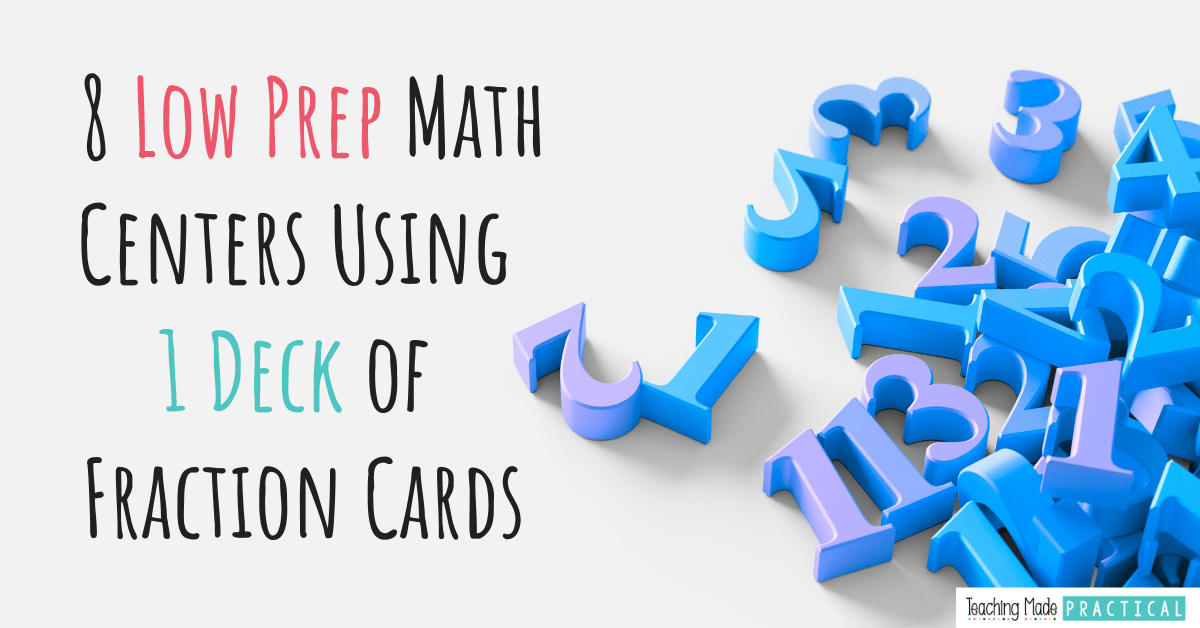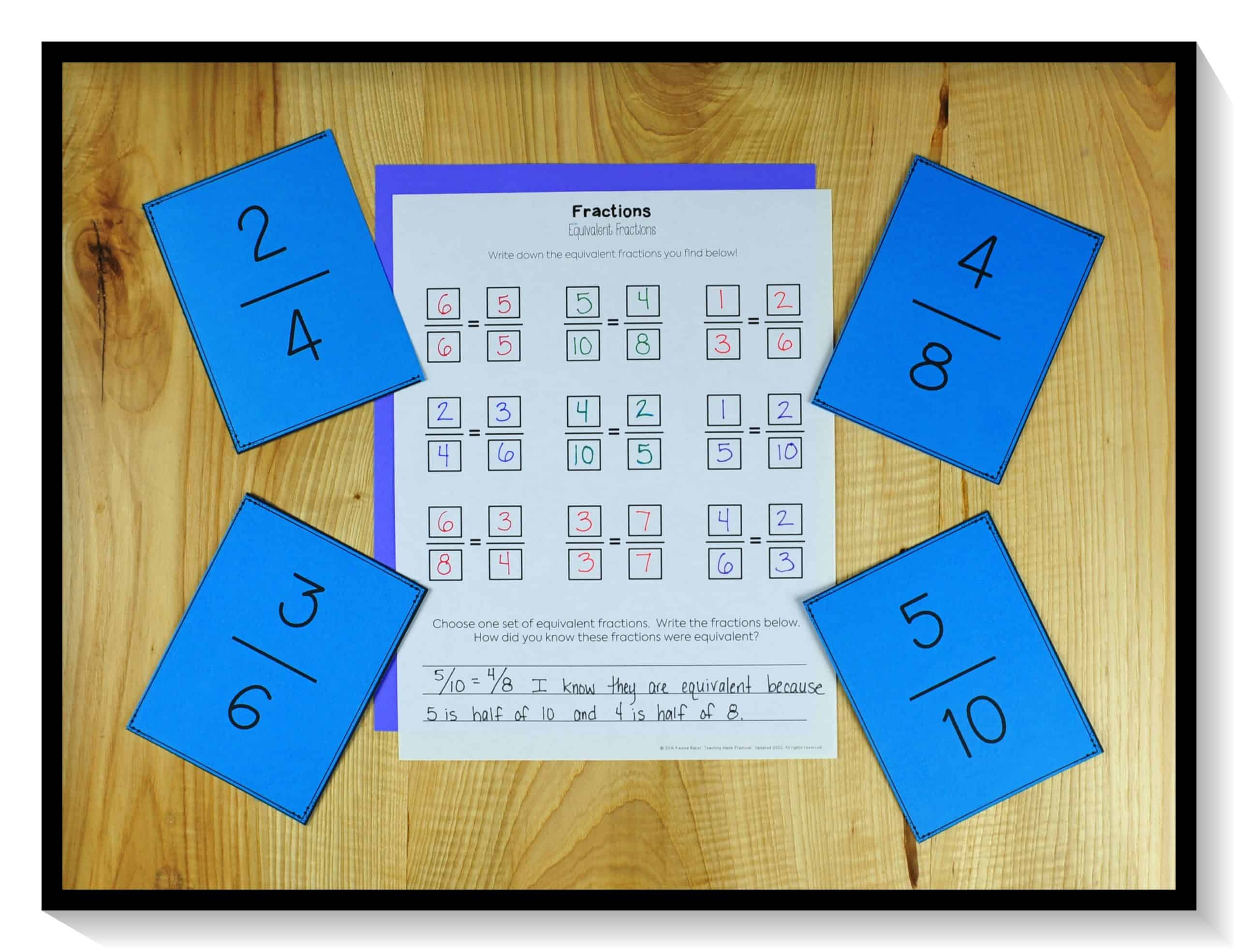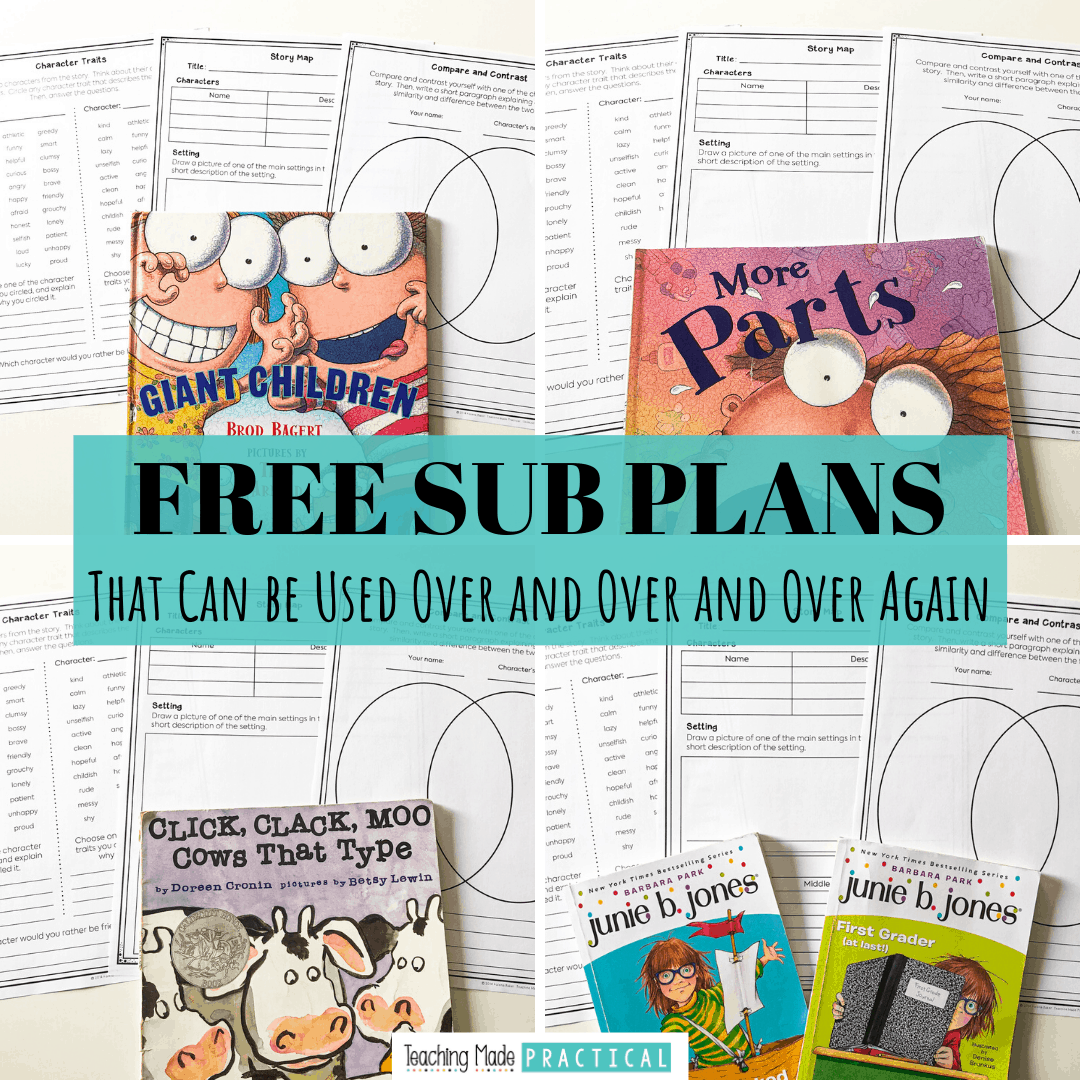
I don’t know any 3rd, 4th, or 5th grade student that wouldn't benefit from fraction centers that provide more practice and review with fractions. It’s a difficult skill that requires a solid base of understanding.
Drills, worksheets, and other district mandated curriculum can get boring fast, so finding ways to make fractions more engaging is essential if students are going to get all of the practice they need!
Using fraction cards as a math game or center is one way to make this difficult skill more fun. And the best part is, fraction cards can be used over and over again with a huge variety of fraction centers and games.
Taking a little time to prepare class sets of fraction cards is a worthwhile investment, because they can be used repeatedly. As students start working on more difficult skills, the games and centers can get more challenging while the fraction cards remain the same.
Using fraction cards is also an easy way to differentiate. Your students that need a challenge can use all of the fraction cards in a deck. Your students that need a little extra support could use only the cards with even denominators.
Below, find 8 different ways you can use fraction cards in your upper elementary class. You can use these cards with reusable fraction centers, or create your own!
8 Fraction Centers / Games using Fraction Cards
1. Draw a Fraction Visual
When students are first introduced to fractions, they usually need extra practice understanding how fractions are represented visually. This makes fractions more concrete to them.
For a very simple fraction center, have students choose a fraction card, and then draw a visual to represent the fraction. This allows students some freedom to be creative because there are a lot of different ways they could create a visual.
For example, for the fraction ¾:
- Students could draw a circle (or square, or rectangle, etc.), divide the shape into 4 sections, and then shade in 3 of the sections
- Students could draw a number line and label ¾ in the correct spot on the number line
- Students could draw 4 shapes and shade in 3 of them.
- Students could draw a pizza with 3/4 of the slices eaten.
- ...and more.
While this would work easiest as an independent center, you could make it seem more like a ”game” by having students play with a partner. If they draw a model correctly, they can keep their fraction card. If they draw it incorrectly, they have to give their card to a partner. Whoever has the most cards at the end of the game wins.
If your students like this, then they will love this free fraction snowman activity.
2. Greater Than, Less Than, Equal To Sort
This can be an independent, partner, or small group activity. Give each student a deck of cards, and then have them sort the cards into 3 groups – cards that are greater than ½, cards that are equal to ½, and cards that are less than ½. When students start being able to easily use ½ as a benchmark, comparing and ordering fractions becomes much easier.
This is one of the reusable activities in my Fraction Cards and Games resource.
3. Ordering Fractions on a Number Line
This takes a little bit more prep, but is worth the trouble to help students develop a better understanding of fractions on a number line. (You might also like these tips for teaching students to round using number lines.)
Provide each group of students with a large number line with only 0, ½, and 1 labeled. Then, have students draw 3 fraction cards and place them in the correct spot on the blank number line. Then, have them draw 3 more cards and repeat the activity.
Depending on the ability of your 3rd, 4th, and 5th grade students – and the size of your number line – you could have students draw more fraction cards at one time.
My Fraction Cards and Games Resource contains a no prep version of this activity.
4. Sorting Fraction Cards from Smallest to Largest
This is essentially the same activity as above, only without the number line. If your students already have a solid understanding of fractions on a number line, then they can start comparing and ordering fractions without using a number line as additional support.
This fraction center is also easily differentiated – some students could draw 3 fraction cards to put in order from smallest to largest, while other students could draw 4, 5, or 6 cards to put in order.

5. Fraction War
This is a fun two player game that gives upper elementary students a chance to practice comparing fractions. To play, students each get half of the fraction cards. Then, both students flip a card at the same time. The person with the largest fraction gets to keep both cards. At the end of the game, whoever has the most cards wins.
If students happen to flip over the same fraction or equivalent fractions, then they each flip over one more additional card. The person who flipped over the largest fraction gets to keep all 4 cards.
6. Equivalent Fraction Sort
This can be an independent, partner, or small group activity. Give each group a set of fraction cards and have them sort the cards, matching up any equivalent fractions that they can find. Depending on your fraction cards, there might be a lot of equivalent fractions, or there might not be very many. Regardless of how many equivalent fractions are in the deck, this is still a beneficial activity.

7. Reducing Fractions Sort
Some as above, only have students sort the cards into 2 groups – fractions that can be reduced and fractions that cannot be reduced.
You could add an extra layer of practice by having students record the fractions that can be reduced, and then have them actually reduce the fractions.
8. Reducing Fractions Slap Jack
This is a 2-4 player game played like regular slap jack, but with a fraction twist!
To play:
- Students divide the fraction cards equally between the players.
- One player at a time flips a card so that it is face up.
- If the fraction can be reduced, then the first person to slap the card and correctly reduce the fraction gets to keep the card, as well as all of the cards underneath it.
- If the fraction cannot be reduced, then the next player flips a card face up.
- If a player slaps a card and it cannot be reduced, that player must give up a card to each of the other players.
Whoever has the most cards when time is up, wins!
Keeping 3rd, 4th, and 5th grade students on task during math center time can sometimes be difficult. Providing a student recording sheet so that students can show their thinking and be held accountable for their center time is an easy way to help students stay on task.
This Fraction Cards and Center Activities Resource includes 64 fractions cards with denominators of 2, 3, 4, 5, 6, 7, 8, 9, and 10. It also includes 5 no prep fraction center ideas with student recording sheets that can be used repeatedly to help your students get all of the practice they need.
Never Stress Over Sub Plans Again!

Make copies, find a fiction book, and you'll be ready for any emergency that comes your way!


